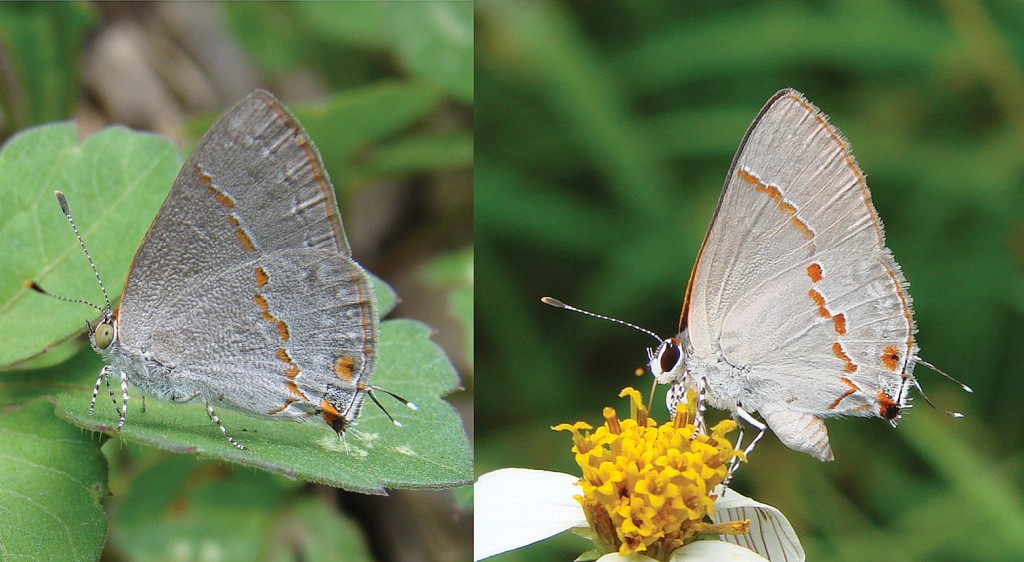I came across this short article today claiming that this recent description of the hairstreak butterfly, Ministrymon janevicroy Glassberg 2013, may in fact be the “last truly distinctive butterfly species left to be discovered in the United States…. [and] the era of new U.S. butterfly species is ending”. I find that statement a little bit odd. One one hand it seems obvious, most of the butterflies in the United States were described long ago. 90% of the hairstreak butterflies were described before 1900 and 97.5% before 2000 (R. Robbins pers. comm.). On the other hand it gives me an itch in the back of my brain that may falsely imply we’ve completed a task and we can move past collecting or research on butterflies. I don’t think the authors intended the latter – and while it’s good to realize we’ve come this far in butterfly taxonomy, it might be helpful to discuss how far we haven’t come (especially when you consider moths!).
The Eumaeini fauna of the United States is well-documented, and most species described in the past 75 years have arguably been cryptic species that had been overlooked because of wing pattern similarity with known species. … In sharp contrast, slightly more than 20% of the Central and South American eumaeine fauna is undescribed (Robbins 2004b), but the vast majority of these undescribed species are exceedingly rare in museum collections, unlike M. janevicroy. Assessing variation of these rare species remains an obstacle to documentation.
And as it turns out the lines about the last butterfly were from a press release written by the authors (pers. comm.). But to me it sounds like splitting hairs, are these butterflies really that distinct? New butterflies are still being described from the US from less obvious characters as eye color, but often have large differences in the genitalia – and these characters can often be much more distinctive than a color feature that fades in preserved specimens. So, yes, this is perhaps the last species to be found that could be told apart in the field. But if anything it points at how much we need specimens in collections to figure these things out in the first place. The authors used 88 specimens of M. janevicroy and compared them to hundreds of other specimens of other species. Good thing there are collectors working hard in the field to find as many of these butterflies as possible (and often at the time not knowing exactly what they are catching). As lepidopterists look closer at the differences separating many of our more diminutive species new names are created to describe what was once thought to be one larger, wide-ranging, single species.
And any readers of my blog should well be aware that many, many moth species are left to be described in the United States. I know of a few revisions that are upcoming that are going to nearly double the size of relatively large families of big and well collected moths – not to mention how little progress we’ve made in the microlepidoptera. One estimate I’ve heard suggests that only 20% of the Tortricidae moth species have been described! When intensive revisions are conducted of these smaller groups the species numbers explode.
Go out and collect!

